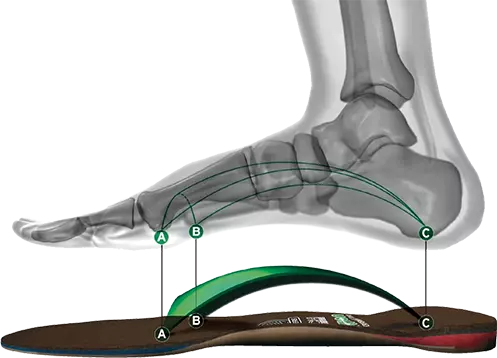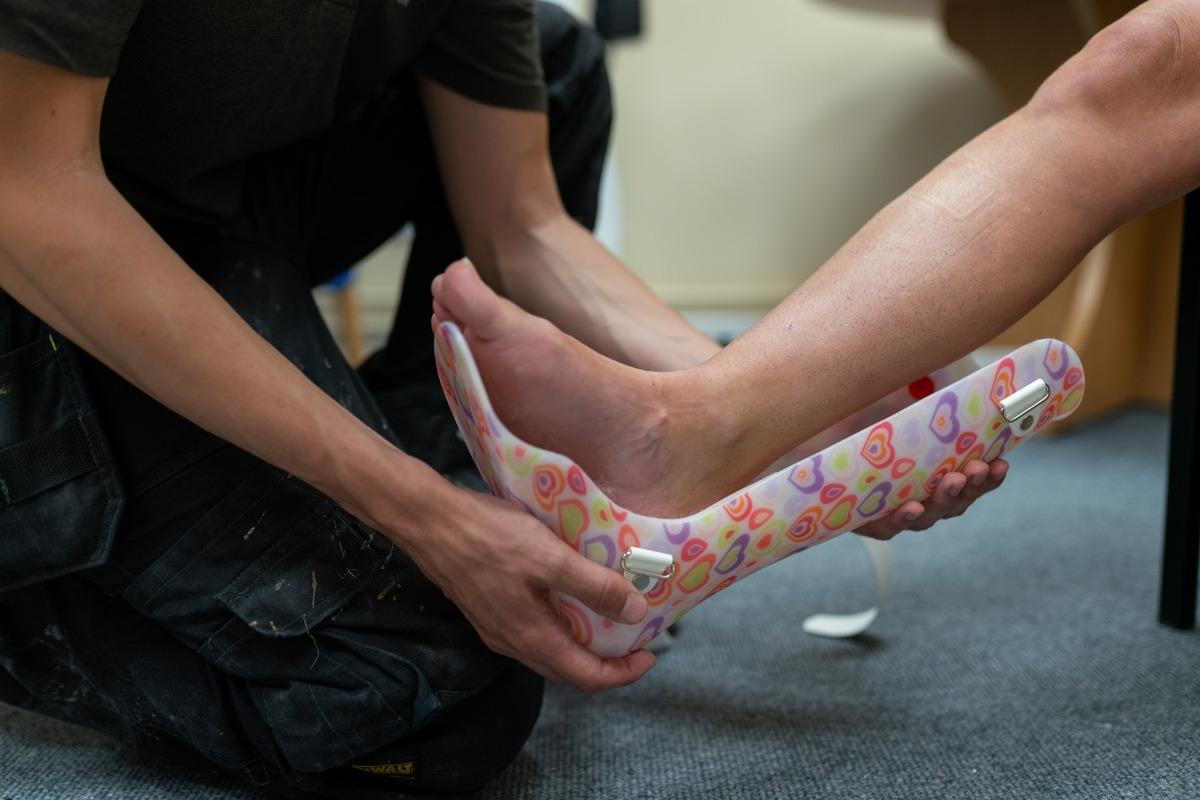How-To Guide for Ski Boot Fitting Nederland CO
Boot fitting for ski racing is a vital facet of the sport, taking half in a significant role in performance and comfort. A well-fitted boot can improve management, precision, and total enjoyment on the slopes. Ski racing requires the skier to exert immense pressure on their boots, making the right fit a crucial part in attaining optimum performance.
The strategy of boot fitting involves a number of intricate steps, beginning with understanding the skier's foot shape and measurement. Every foot is exclusive, and various manufacturers have totally different last widths, heel shapes, and instep heights. A trained boot fitter will take exact measurements, ensuring that the skier's foot is accurately represented within the chosen boot model.
Once the measurements are obtained, the following stage is the selection of boots that align with the skier's skill stage and racing goals. For novice racers, a softer boot might present some forgiveness and luxury. In contrast, extra superior racers usually require stiffer fashions that facilitate greater power switch for heightened control, notably at high speeds.
After selecting the best boot, the fitting process really begins. This is where the boot fitter meticulously focuses on making a custom-made fit, usually referred to as "shell fitting." The boot is tried on with out the liner, allowing the fitter to evaluate how the shell of the boot contacts the foot. Gaps or pressure points can be identified easily at this stage, with the goal being to eliminate any areas that would lead to discomfort over time.
The Art of Ski Boot Customization Nederland CO
Heat molding is among the most vital parts of boot fitting. This includes heating the liner and typically even the shell, allowing it to mold around the skier’s foot. A properly molded liner hugs the foot snugly, offering each heat and comfort. This warmth can stop chilly toes throughout long days on the slopes, a difficulty that many racers face.
While heat molding is crucial, so is making fantastic adjustments through the fitting. Often, minor tweaks such as footbeds or insoles could additionally be essential. A customizable footbed can considerably enhance fit, cushioning, and general support. It can even enhance alignment, which is fundamental for minimizing fatigue and sustaining control throughout high-speed runs.
Boot Fitting Innovations in the Industry Frederick CO
It’s important to consider the flex index of the ski boots. Various manufacturers fee flex in one other way, however typically, junior racers require a softer flex to promote mobility and adaptableness as they're nonetheless growing expertise. More superior rivals often opt for a stiffer flex that interprets into higher power transmission and responsiveness when carving turns.
Another consideration in boot fitting for ski racing is the stance alignment. Proper alignment of knees, hips, and ankles is crucial for environment friendly vitality switch and stopping injuries. The boot fitter will assess this alignment and make adjustments, if needed, to ensure that the skier is in the best position for performance.
Evaluating Different Boot Fits Brighton CO
The position of socks cannot be missed when it comes to boot fitting. Specialized ski socks, often manufactured from supplies designed for moisture-wicking and insulation, play a vital position in maintaining warmth. Additionally, they can help minimize friction contained in the boot itself, decreasing the probability of blisters during extended periods of snowboarding.
Communication between the skier and the boot fitter is important all through the fitting process. Skiers should voice any discomfort or pressure points they may really feel, allowing the fitter to address these issues instantly. This back-and-forth helps ensure the ultimate product will meet the skier's specific wants and preferences.
Boot Fitting Instructions for Beginners Niwot CO
Finally, attempting the boots on the snow is irreplaceable. An preliminary fitting can really feel nice in the shop, however snowboarding puts a special set of calls for on the boots. If a skier can, they need to test the fit on a practice run or training course to confirm comfort and performance. This real-world testing helps to determine minor changes that will not have been obvious during the fitting.
In conclusion, boot fitting for ski racing is a meticulous and personalized process that greatly impacts a skier’s performance. The correct fit enhances comfort, ensures management, and minimizes the risk of injury. By investing time and attention into finding the best boots, racers can concentrate on what they love most – the joys of the race.
The collaboration between the skier and the boot fitter is crucial in navigating this advanced journey. A excellent fit not only improves performance but also fosters enjoyment within the sport. Through quality fitting, attention to detail, and personalized adjustments, skiers can benefit from their racing expertise and attain their full potential on the slopes.
- Precise measurements of foot length and width are essential for reaching a snug fit, minimizing motion that may have an effect on performance during races.
- Ski boot liners must be heat-molded to make sure a custom fit, allowing for enhanced comfort and improved vitality transfer to the ski.
- The flex rating of a ski boot ought to match the athlete's snowboarding fashion, with stiffer boots recommended for advanced racers who require higher management at high speeds.
- Ankle and heel hold is essential; fit specialists usually employ numerous techniques to ensure these areas are securely locked in place.
- Proper alignment of the boot cuffs can significantly impact steadiness and edge control, making it important for racers to have well-adjusted cuff positioning.
- The tongue of the boot ought to ideally provide consistent pressure across the instep, preventing discomfort and enhancing responsiveness.
- Using footbeds or custom insoles can improve foot support, offering better stability and lowering fatigue throughout long races.
- Attention to vent placement is necessary; adequate ventilation helps regulate temperature, stopping numbness or discomfort during runs.
- Evaluating the skier's method and stance can guide particular boot changes, tailoring the fit to enhance general performance on the racecourse.
- Consistent follow-up changes post-fitting can help tackle any discomfort that will arise during coaching, guaranteeing peak performance throughout competitions.undefinedWhat is boot fitting for ski racing?
Custom Fit Boot Liners Overview Firestone CO
Boot fitting for ski racing is the process of customizing ski boots to ensure optimum fit, comfort, and performance on the slopes. It includes adjusting various elements to enhance your skiing experience and obtain extra efficient power switch.

Why is proper boot fitting important for ski racing?
Boot Fit Testing Before Purchase Golden CO
Proper boot fitting is essential for ski racing as a result of it allows for higher management, responsiveness, and comfort. A well-fitted boot may help prevent accidents and enhance general performance by ensuring that skiers can keep proper approach and stability.
How do I know if my ski boots fit correctly?
You can decide if your ski boots fit correctly by checking for a comfortable fit with out pressure points. How to Prepare for a Boot Fitting Session Dacono CO. When buckled, your toes ought to barely brush the front of the boot, and there ought to be minimal motion of your heel. A qualified boot fitter also can conduct an expert evaluation
Boot Fit Consistency and Reliability Niwot CO
What customizations may be carried out in the course of the boot fitting process?
Customizations through the boot fitting process can embrace heat molding liners, adjusting buckles, including custom footbeds, and modifying the shell. Each adjustment is tailored to accommodate your unique foot shape and snowboarding style, enhancing comfort and performance.
How long does the boot fitting process take?
Ski Boot Maintenance for Continued Fit Wheat Ridge CO
The boot fitting process usually takes wherever from 1 to 3 hours, relying on the extent of customization needed. This timeframe allows for thorough evaluations, changes, and testing to ensure the very best fit.
Can I ski immediately after getting my boots fitted?
It's advisable to allow a while to interrupt in your newly fitted boots earlier than heading out to ski. While you presumably can definitely attempt them on and stroll round in them, skiing with them for a couple of hours helps ensure they settle into the fit and improve comfort.
How typically ought to I get my ski boots fitted?
Custom Fitting for Unique Feet Arvada CO
It's really helpful to get your ski boots fitted each few seasons or every time there are noticeable modifications in your foot shape, discomfort arises, or in case your skiing fashion changes considerably. Regular evaluations help preserve the most effective fit and performance.
What should I deliver to a boot fitting appointment? (Master Boot Fitting Techniques Dacono CO)
For a boot fitting appointment, wear or bring the socks you usually ski in, as they will affect fit. Additionally, contemplate bringing any present ski gear, similar to your skis and bindings, to help the fitter assess your complete setup.
Analyzing Foot Shape for Ski Boot Fit Superior CO
Are there special issues for girls or racers with unique foot shapes?

Yes, women and racers with unique foot shapes might have specialised boots or custom modifications. Women's ski boots usually have totally different flex patterns and shapes, whereas unique foot shapes might require custom footbeds or shell modifications for optimum performance.
What if I experience discomfort after my boot fitting?

If you expertise discomfort after your boot fitting, it's essential to return to your fitter. They can assess the issues and make needed adjustments (Benchmarking Ski Boot Fit Adjustments Louisville CO). Addressing discomfort early on can stop performance issues and enhance your snowboarding expertise
index Clicking Here